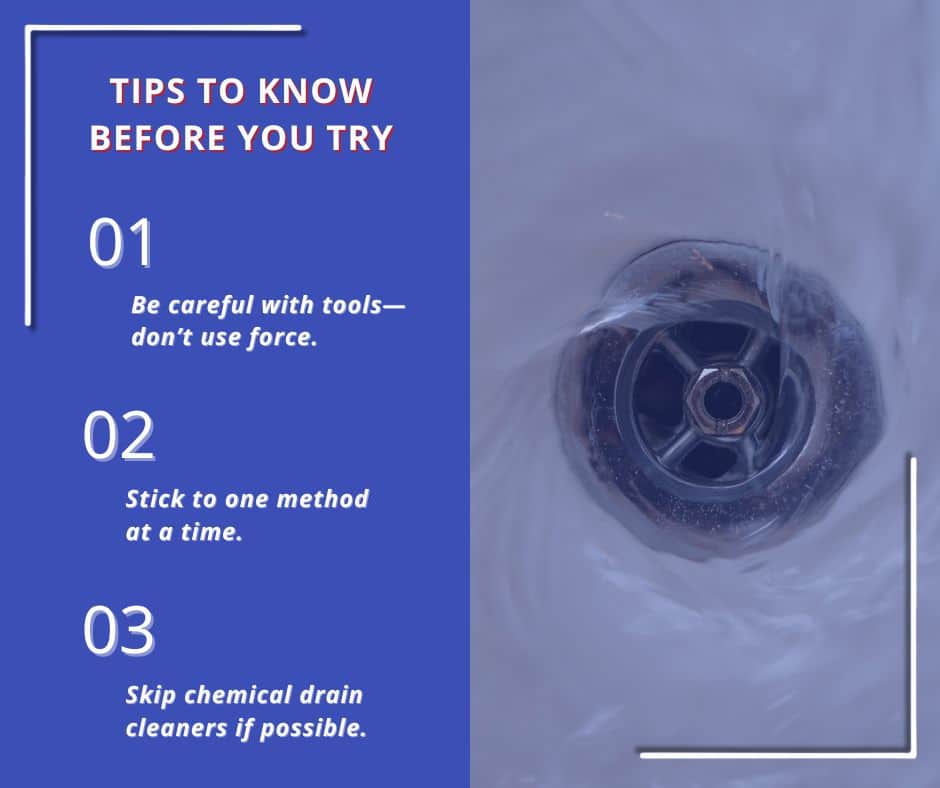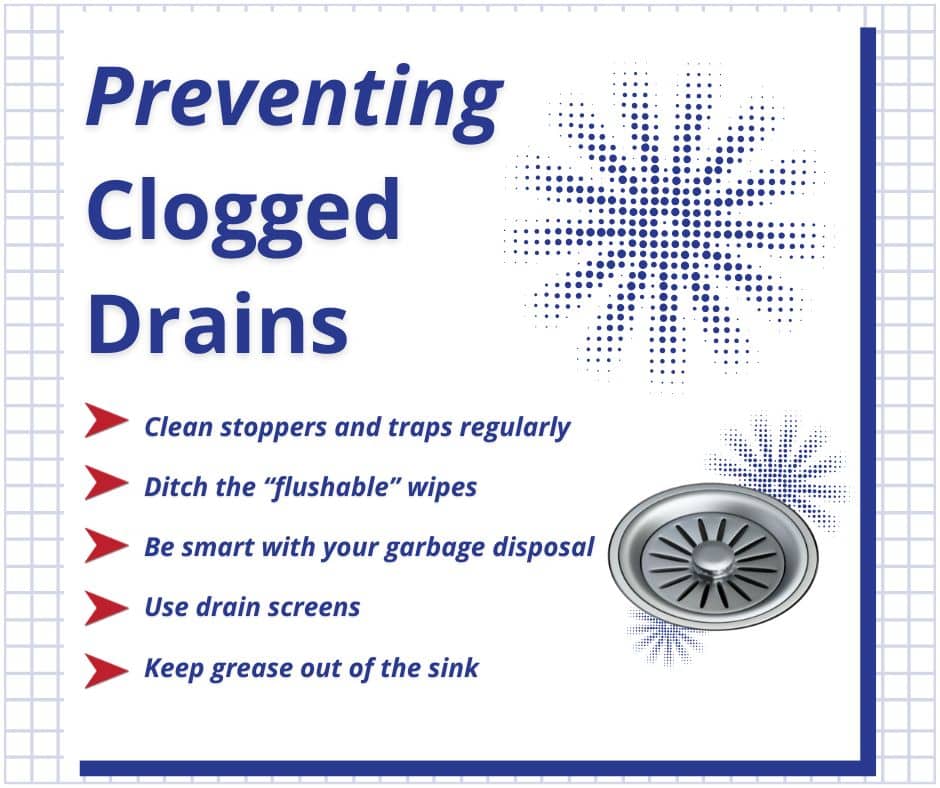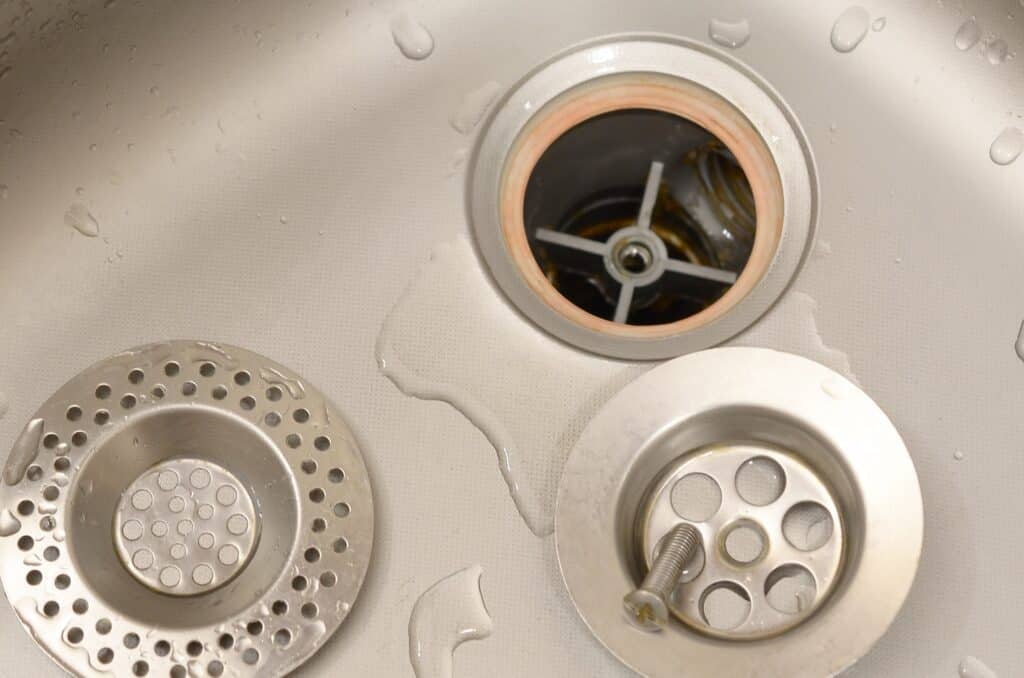There’s nothing more frustrating than a slow drain—except maybe making it worse by trying to fix it the wrong way. Whether it’s your kitchen sink, bathroom shower, or laundry tub, clogs can seem like minor annoyances at first. But if you’re not careful, they can turn into plumbing problems that cost real money. In this guide, we’ll walk through how to unclog a drain safely, what to avoid, and how to know when it’s time to bring in a professional.
What Clogs a Drain?
Drains are designed to move water—not grease, hair, or food scraps. But over time, even small particles can build up inside your pipes. Here’s how it usually happens:
- In kitchens, grease and food debris coat the inside of the drainpipe.
- In bathrooms, hair, soap scum, and toothpaste form sticky clumps.
- In laundry rooms, detergent residue and lint slow down water flow.
Eventually, all that buildup gets too thick for water to pass through. That’s when you’ll start to notice slow draining, standing water, or strange gurgling sounds. The good news is that many times, you can probably unclog the drain yourself if you go about it the right way.

What Not to Do When Unclogging a Drain
Before you start pouring or poking anything into your drain, let’s cover a few things to avoid. Some common “quick fixes” can do more harm than good and may lead to bigger problems later.
Skip the Chemical Drain Cleaners
They may promise fast results, but chemical drain cleaners are one of the least plumber-recommended methods.
They use corrosive ingredients that can weaken pipes over time, especially in older homes with metal or PVC plumbing. Worse, they often don’t remove the clog completely—just enough to give the illusion that the problem is solved.
Don’t Combine Methods You’re Unfamiliar With
Mixing products like baking soda, vinegar, boiling water, or bleach may seem safe. However, combining the wrong ingredients can cause chemical reactions. This can release harmful fumes or harden buildup inside the pipes.
Stick to one method at a time, and if it doesn’t work, stop and reassess.
Be Careful With Tools Like Drain Snakes
It’s tempting to try a drain snake or auger, especially if you’ve seen how easy it looks online…But professionals are careful for a reason.
Using a wrong-sized snake, feeding it incorrectly, or forcing it through resistance can damage pipes or compact the clog, making it worse. If you’re using a simple plastic hair removal tool (the kind made for bathroom drains), that’s usually safe for surface-level clogs.
If the blockage is deeper or in a kitchen or main line, a DIY attempt with the wrong tool could lead to leaks or cracked fittings.
When in doubt, don’t force it, and if the tool doesn’t move freely, stop to call a professional. It’s not worth risking damage to your plumbing system for the sake of a quick fix.
How to Unclog a Drain Without Damaging It
Now that you know what not to do, here’s what actually works—safely—to unclog a drain.
1. Boiling Water
This method is simple but surprisingly effective on grease or soap buildup.
- Boil a large pot of water.
- Slowly pour it down the drain in two or three stages.
- Wait 30 seconds between each pour to give it time to work.
This won’t fix every clog, but it’s a great first step—and it costs nothing to try.
2. Baking Soda and Vinegar
This natural solution is a safer alternative to harsh chemicals.
- Pour 1/2 cup of baking soda down the drain.
- Follow with 1/2 cup of white vinegar.
- Cover the drain and let it fizz for about 15 minutes.
- Rinse with hot water.
This works best for mild clogs and also helps eliminate odor.
3. Plunging Properly
A sink or tub plunger can be very effective if used correctly.
- For sinks, block the overflow hole with a damp cloth.
- Add a few inches of water to create suction.
- Use quick, firm plunges for 30 seconds.
- Repeat if needed, then test the drain.
Make sure you’re using a cup-style plunger, not a toilet plunger, for the best results.
4. A Drain Snake or Hair Removal Tool
If you suspect the clog is caused by hair or something stuck just beyond the drain, a basic plastic drain tool or small auger can help.
- Gently insert the tool into the drain.
- Rotate or pull to grab the clog.
- Slowly remove and discard the debris.
- Rinse with hot water.
Be gentle—don’t force the tool deeper than it naturally goes.
5. Clean the Drain Trap
If your kitchen sink still won’t drain, the blockage may be stuck in the U-shaped pipe under the sink.
- Place a bucket under the pipe to catch water.
- Unscrew the slip nuts and remove the trap.
- Clear out any buildup, then rinse and reassemble.
This fix is simple if you’re comfortable working under the sink, but if you see signs of corrosion or damage, it’s best to stop and call a pro.
Signs the Problem Goes Deeper
Not every clog is a surface-level issue. Sometimes, it’s a symptom of something more serious.
Watch for these signs:
- Water backs up in multiple drains
- Gurgling sounds from other fixtures when water runs
- Strong odors coming from the drain
- Clogs that keep returning after being cleared
These could point to a blockage in your main drain line or a more complex plumbing problem, like pipe damage or root intrusion. DIY fixes won’t solve those.

Preventing Future Clogs
Once your drain is flowing again, take a few simple steps to keep it that way:
- Don’t pour grease or oil down the drain—use a container and throw it in the trash.
- Install drain screens in sinks and showers to catch hair and food particles.
- Flush drains weekly with hot water to break up early buildup.
- Only put soft foods in the garbage disposal—no bones, peels, or coffee grounds.
- Avoid using “flushable” wipes, which don’t break down easily and can clog your sewer line.
Preventive habits go a long way toward avoiding clogs and keeping your plumbing in good shape.
When to Call a Professional
If you’ve tried all the safe methods and haven’t been able to unclog the drain, it may be time for a professional inspection.
Pick up the phone if:
- You’re dealing with repeat clogs in the same drain
- You’re seeing drainage issues in multiple areas of the home
- There’s a bad smell coming from the drain
- You’re unsure what’s causing the clog
A licensed inspector can check your home’s plumbing system without invasive digging or guesswork. At America’s Choice Inspections, we don’t just treat the symptom—we look for the real cause of the issue so you can avoid repeat problems down the road.
Conclusion
Clogged drains are common—but they don’t have to lead to expensive repairs. Start with simple, safe methods. Avoid the harsh stuff. And know when it’s time to bring in help.
If your drain issues keep coming back or you suspect a bigger problem, a home inspection can help uncover the cause before it turns into serious damage. Think a slow drain might be part of a larger issue? Book an inspection with America’s Choice to get a clear, detailed look at your home’s critical systems.


